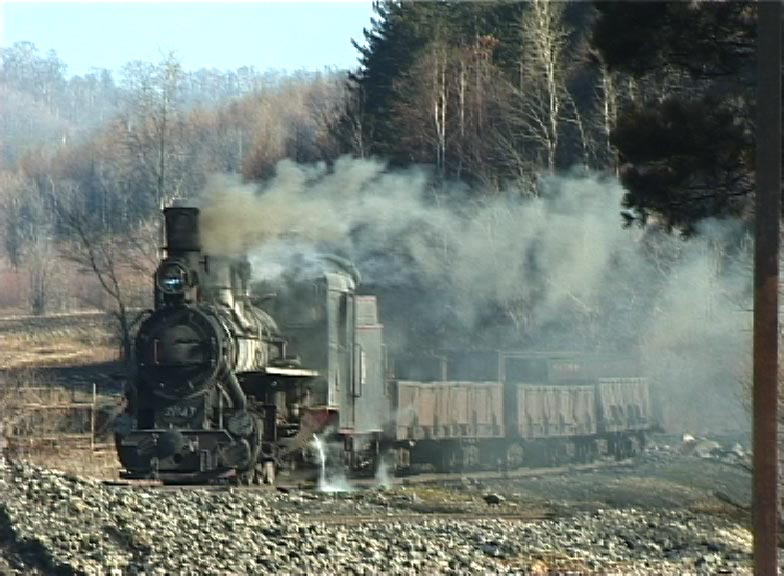

The description below follows the sections on a double Huanan DVD I have just finished. For details of how to purchase this DVD, click here.
The Huanan Coal Railway is based on the stub of a former logging system. (See Steam in Northern China, October 2005 at http://www.farrail.net/ for a map showing the full extent of the system.) The line is still owned by the Forestry Bureau and I was told that coal is primarily used to provide heating for Forestry Bureau offices and factories. The Bureau is keen to protect its access rights to the land it owns distant from Huanan and seems to be concerned that if it closes the line, it will lose the linear strip giving it access to the countryside. This was the reason given in 2005 for tree-planting between Huanan and Xiahua. The line is notorious for its long annual closure from a date (usually in January) when, it seems, it has met its coal quota for the year to a date in March or April when the miners return from their winter break and coal traffic resumes. In 2006-7, this break started on 25 December (much earlier than usual) because the local government (based in Jiamusi) had ordered the mines closed so there would be no more accidents prior to Chinese New Year. As I write this (February 2007), the local government would prefer the mines to stay closed permanently while the mine owners and workers wish to resume their dangerous business. It seems likely that the mines (and the railway) will reopen in spring 2007 but long-term both central and local government will require the mines to close permanently. That will mean the end of the railway. The Forestry Bureau could also decide to close the railway even if the mines stay open. There is a bad road from Huanan which is already used to move coal from Hongguang and which I used in 2007 to find the end of the line and the coal mines.
There is a public railbus which operates whether the coal traffic is moving or not. However, this January, with no coal traffic, the railbus was suspended due to snow. The railbus provides vital access to the community at Lixin (the only other access being by motorcycle, animal, on foot or tracked vehicle) and alternative access to the other places along the line. From Hongguang, there is otherwise an early morning bus out (to Huanan) with an evening return. The railbus provides a late morning arrival and a lunchtime return to Huanan to complement this. Various foreigners know to their cost that the railbus operates a mercenary 'rip off' dual pricing system design to part foreigners from as much of their yuan as possible. Currently, the going rate is ¥100 each way with slightly cheaper rip offs for Tuoyaozi to Lixin and other part journeys.
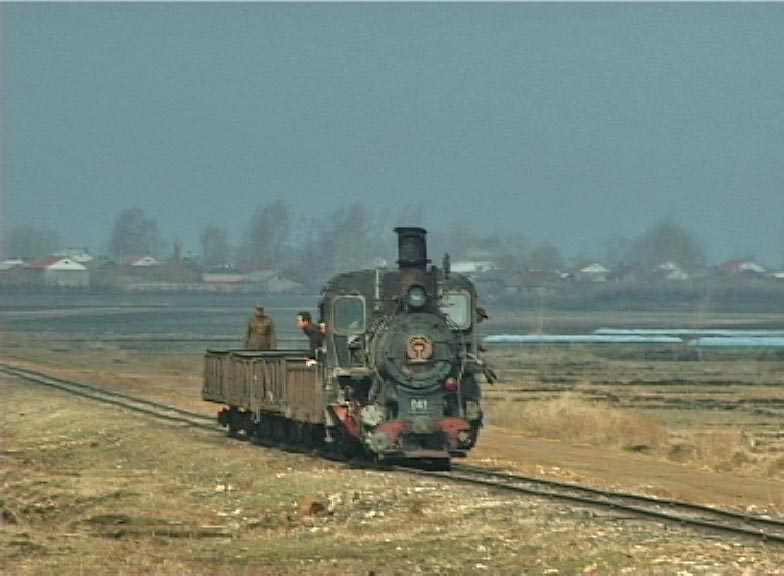
Huanan - Xiahua
Huanan has the depot, workshops and transfer yard with China Rail. When I visited in 2005, the depot (or more accurately, the stabling point) was on a spur line close to the station and easily accessible. However, by 2006 this had moved deep inside the gated and secure works complex and is inaccessible unless you have chartered a train on the line. The management are generally unfriendly to foreign visitors who aren't giving them large sums of money but it is likely that the move was not purely to annoy gricers. The railbus still stables on the spur and uses the turntable to leave its shed and turn before its next run.
In 2005, I concentrated on getting good lineside picture in the scenic section between Tuaoyaozi and Lixin. As a result, by the time I was reasonably satisfied with this footage, the railway was hit by a shut down at the coalmines due to a planned power cut (to allow the local power station to carry out necessary repairs at the end of winter). Coal trains ceased but the railway started a tree planting campaign between Huanan and Xiahua which allowed me to get a few shots of steam on this section. The purpose behind this exercise was, so I was told, to help ensure that the Forestry Bureau's rights to the line and a strip either side would be defined and would not be lost if the railway closed. On my return in 2006, there was absolutely no sign of any of the trees I saw being planted and it looks as if the local farmers have removed them in order to extend their fields back to the lineside. The exercise appears to have been futile.
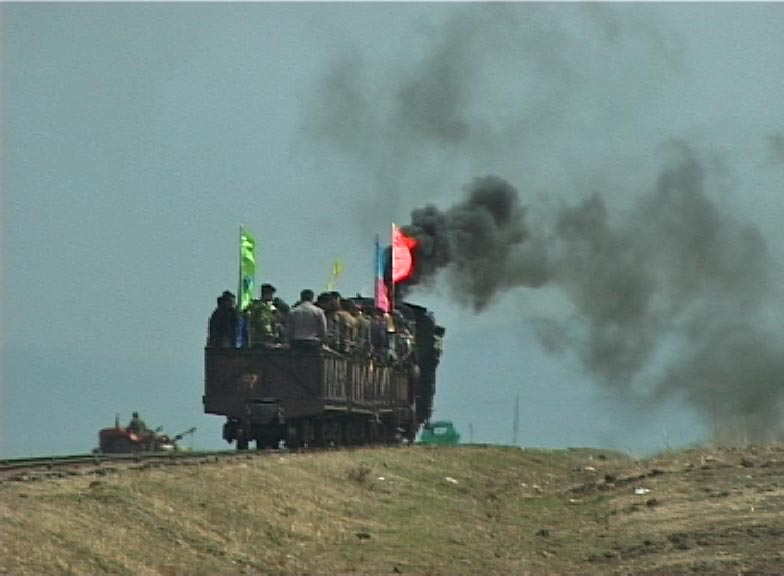
As well as observing the planting specials, I also had a quick look at the closed station at Dajiugang (km 12.5). The line is now signalled to allow trains to pass at Huanan, Xiahua and Lixin only. Dajiugang, Tuoyaozi and Hongguang have no signalling facilities, so 2 trains cannot be allowed to proceed and pass at these places. Lixin to Hongguang and return is worked as one section and only one train can be in this section at one time. The long sections can sometimes lead to delays for the railbus if a coal train is still in one of these sections.
Xiahua - Tuoyaozi
On arrival at Xiahua, a train of empties will normally wait for a train of fulls to arrive (or vice versa). It will then proceed to Lixin. The train of fulls will proceed to Huanan. However, as the locos can haul far more wagons (empty or full) on the flat section from Xiahua to Huanan, there are occasional variations in this pattern when two trains of fulls may be combined and one loco may return with empties to Lixin. This variation is not fully understood and more information would be welcomed. It may happen when the pattern has been disrupted by loco failure or stoppage.
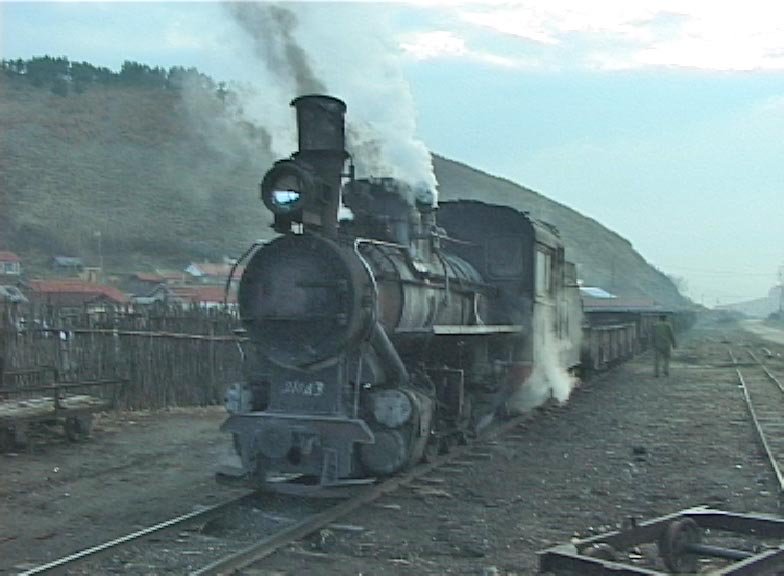
There is a short climb from Xiahua to Tuoyaozi. The line is no longer roadside and the road and rail cross at the entrance to Tuoyaozi at the summit of this climb. The train then runs down into Tuoyaozi where it may stop for fire cleaning before attacking the climb to the Summit. When fulls arrive in Tuoyaozi, they have their brakes pinned down. Trains always stop to unpin the brakes.
Tuoyaozi is backed by a hill to the north which allows a good vantage of the descending full trains.
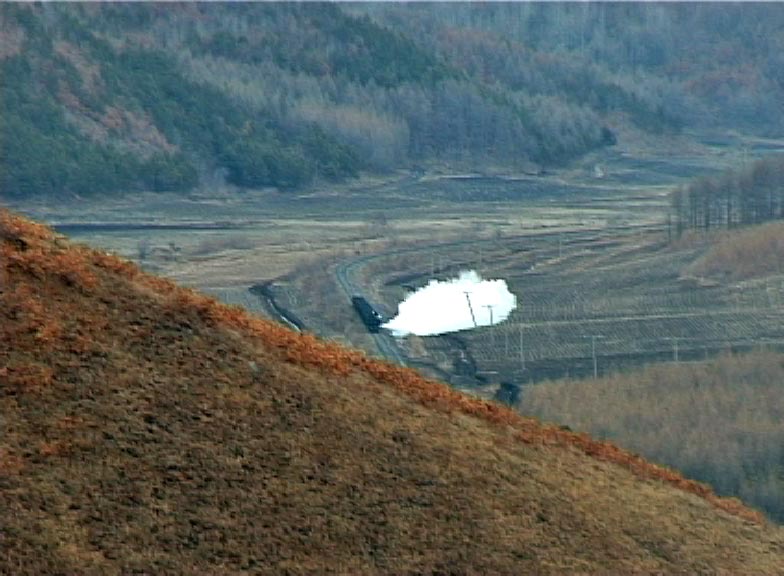
There are at least 2 places to stay in Touyaozi which have been used in the past by foreign enthusiasts. One is the permanent way gang master's house which is just by the disused crossing loop. The other is in the local bath house.
Tuoyaozi - Summit
The line starts to climb up a long bank before reaching a horseshoe curve. Above this curve is a further horseshoe curve by a Permanent Way hut and a further curve just above the first horseshoe. From there is a final straightish bank to the summit.
Motor cycles use the path beside the track to get to the first horseshoe and are then able to cut off to the curve above. Anyone photographing at the first horseshoe can also scramble up the slope and with luck get a second shot on the upper level.
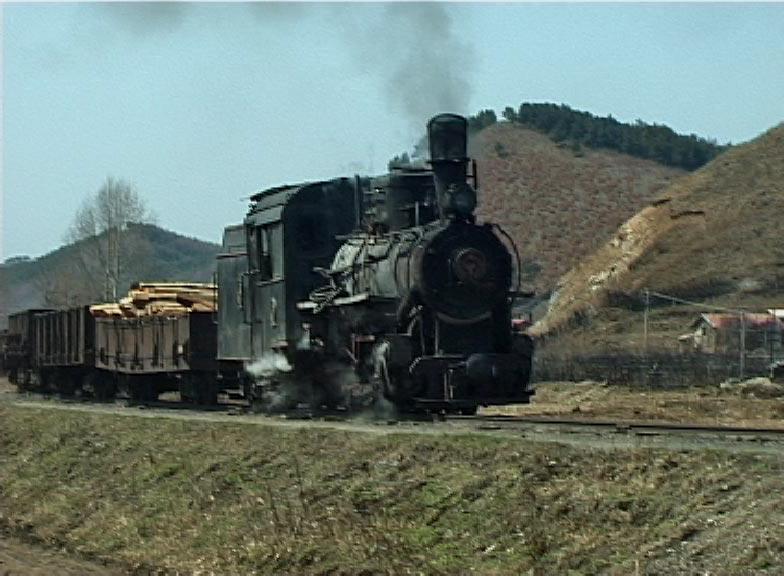
From April to late August, the forest area is full of air-borne ticks which carry Japanese Encephalitis. Further visitors are advised to visit earlier or later in the year or, if they are there in the tick season, to be very careful to check for ticks at the end of the day. I found about 3 in the time I was there. In all cases, they had not yet found a soft spot on my flesh to burrow in. Locals at risk have an annual injection to ward against the infection. You have been warned.
Lixin - Summit
On the Lixin side, the loaded trains need a banker to get to the summit. The banker is attached to the train and the train halts at the summit for the banker to be disconnected and to pin down the breaks for the descent. There are few good positions to photographed these banked trains. The best positions are probably leaving Lixin.
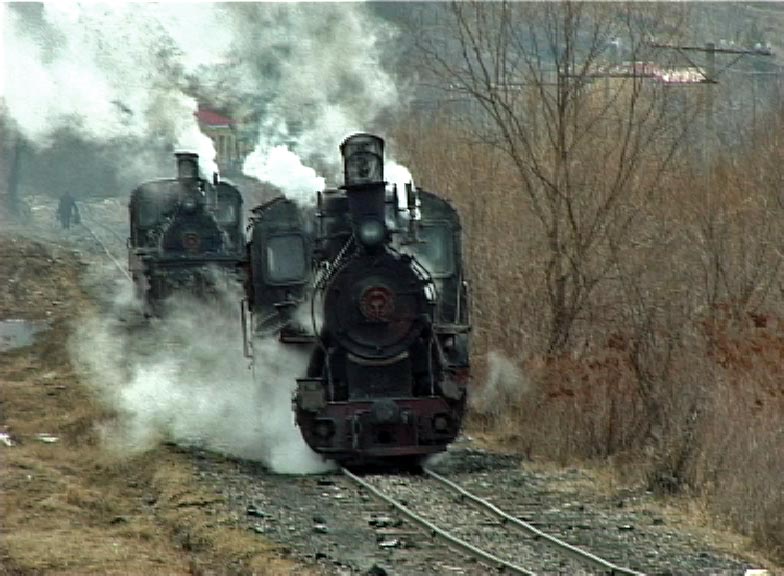
This area shows signs of gold working which have replaced forestry as the way for locals to get rich. Gold fever can have a funny effect on an area and this may partly explain the way the area has turned less friendly to foreigners unless they are willing to hand over large sums for what should be either free or inexpensive activities. The current extortion racket involves the local forest owners (not the Forestry Bureau) who feel that foreigners should pay a fee to enter the area beyond Tuoyaozi. This started in 2006.
Lixin Station
Empty trains wait here for a full train from Hongguang. The loco turns on the triangle and then banks the full train to the Summit. It then continues to Hongguang tender first as there are no turning facilities there. Locos on full trains come of the train and service before attacking the bank.
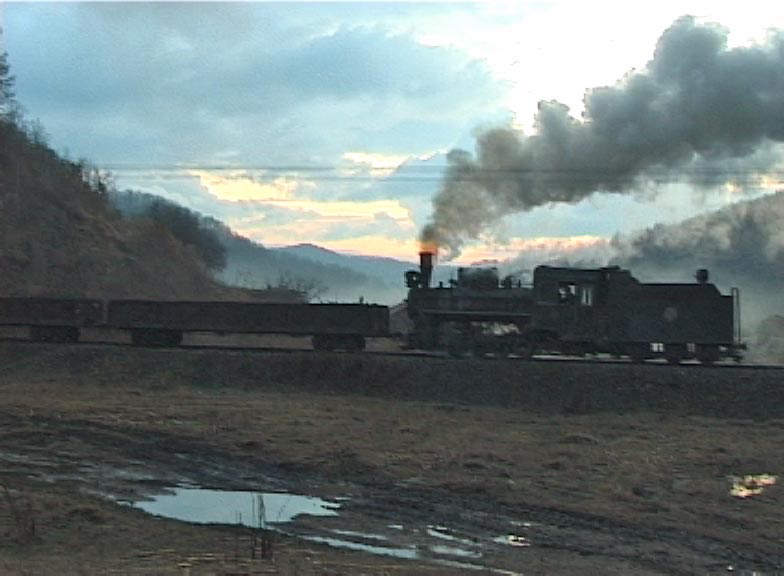
The railbus also turns at Lixin on the outward journey and continues in reverse to Hongguang.
Normally the railbus is given priority and a train of empties will not be allowed to proceed to Hongguang if the railbus is due. Nor will a loaded train be allowed to climb the bank if the railbus is expected in Xiahua. However, although the railbus operates to a rough schedule, the coal trains only operate to an untimetabled sequence using 3 locos and this rule is sometimes broken and can lead to late-running of the railbus. What circumstances cause this to happen are not known but it is most likely to be if the railbus is already running late.
Hongguang - Lixin
It's uphill from Honguang with the fulls but as this is only one loco, the grade is not severe and this is the most remote section, very few people photograph this section. My video clips are taken within 10 minutes of Lixin. When the empties arrive at Hongguang, it appears that the loco pushes the wagons into the loading siding where they are filled using a JCB-type tractor with a bucket. The loads are then removed from the siding and propelled a short distance to where the loco can run round and head for Lixin. There are 4-5 small coalmines in this area that provide the coal for the railway to carry. They are all about 2 km from the loading dock on poor roads.

Banking in the Rain
The weather wasn't wonder in April 2005 and nor was spring as advanced as I had expected. You will see snow on the ground in some scenes and there was occasional rain. This can lead to some very atmospheric shots.
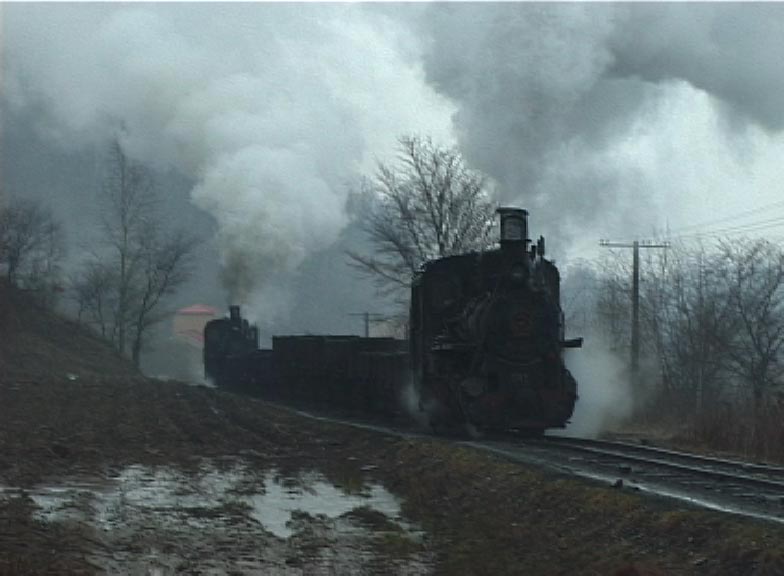
Riding the Railbus
The railbus operates a rough daily schedule leaving Huanan at 0800, arriving at Hongguang around 1000 and leaving there at 1200 for the return. Arrival back in Huanan is around 1400. However, as this is a single track railway with passing loops and an intensive coal service, this schedule is subkect to delays. I videod the line from the front of the railbus next to the driver in December 2006 a few days after the coal traffic had ceased on local-government orders. The railbus continued to operate until snow on the hilly section forced operation to be suspended. It may still be suspended as I write this. It was below freezing and the inside of the windscreen rapidly frosted over. Using the credit card scraper trick, I eventually cleared a reasonable section of the windscreen and good views are had in both directions. Due to the lack of turning facilities at Hongguang, the railbus needs to run in reverse in one direction and it turns at Lixin on the way out and runs backwards to the end of the line. The railbus is often known as the rip-off railbus and (with railway management encouragement), the railbus operators (father and son) take pleasure in extracting ¥100 from each foreigner for each leg of a full journey along the line. (Your purchase of a copy of the DVD will help me recover from this attack on my life savings!)
(See Steam Lines> Heilonjiang> Huanan Coal Railway at http://www.sy-country.co.uk/ for maps and reports of the current operation.)
John Raby
Nottingham
February 2007